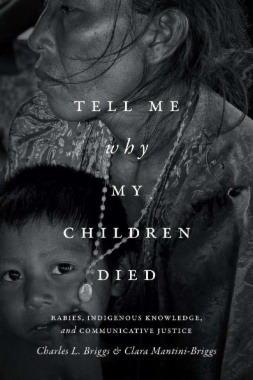Tell Me Why My Children Died tells the gripping story of indigenous leaders' efforts to identify a strange disease that killed thirty-two children and six young adults in a Venezuelan rain forest between 2007 and 2008. In this pathbreaking book, Charles L. Briggs and Clara Mantini-Briggs relay the nightmarish and difficult experiences of doctors, patients, parents, local leaders, healers, and epidemiologists; detail how journalists first created a smoke screen, then projected the epidemic worldwide; discuss the Chávez government's hesitant and sometimes ambivalent reactions; and narrate the eventual diagnosis of bat-transmitted rabies. The book provides a new framework for analyzing how the uneven distribution of rights to produce and circulate knowledge about health are wedded at the hip with health inequities. By recounting residents' quest to learn why their children died and documenting their creative approaches to democratizing health, the authors open up new ways to address some of global health's most intractable problems.
- Cover
- Contents
- Illustrations
- Prologue
- Preface
- Introduction
- Part I
- 1.
Reliving the Epidemic: Parents’ Perspectives
- 2.
When Caregivers Fail: Doctors, Nurses, and Healers Facing an Intractable Disease
- 3.
Explaining the Inexplicable in Mukoboina: Epidemiologists, Documents, and the Dialogue That Failed
- 4.
Heroes, Bureaucrats, and Ancient Wisdom: Journalists Cover an Epidemic Conflict
- Part II
- 5.
Narratives, Communicative Monopolies, and Acute Health Inequities
- 6.
Knowledge Production and Circulation
- 7.
Laments, Psychoanalysis, and the Work of Mourning
- 8.
Biomediatization: Health/Communicative Inequities and Health News
- 9.
Toward Health/Communicative Equities and Justice
- Conclusion
- Acknowledgments
- Notes
- References
- Index

